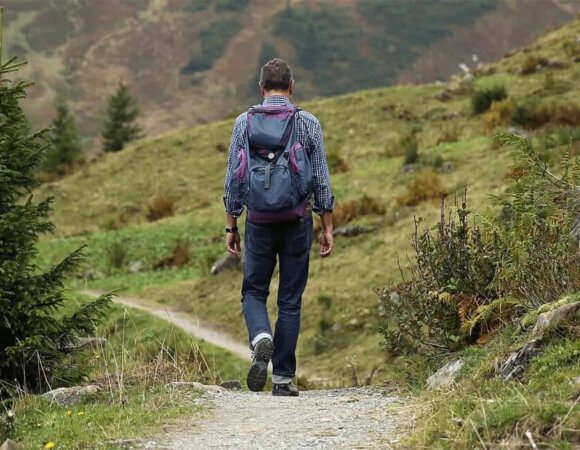Understanding HAPE: Symptoms, Causes, and Prevention Strategies
High-altitude pulmonary edema (HAPE) is a potentially life-threatening condition affecting mountaineers and travelers at high elevations. Learn about its symptoms, causes, and how to prevent this serious condition through proper acclimatization and preparation.
Table of Contents
ToggleHigh-altitude pulmonary edema (HAPE) is a serious medical condition that occurs when fluid builds up in the lungs at high elevations. This dangerous condition typically affects climbers, skiers, and travelers who ascend to altitudes above 8,000 feet too quickly. Without proper treatment, HAPE can become life-threatening within hours or even minutes in severe cases. Understanding this condition is crucial for anyone planning to visit high-altitude destinations, whether for adventure sports or tourism. The condition represents one of the most severe forms of altitude illness, alongside acute mountain sickness (AMS) and high-altitude cerebral edema (HACE).
What is HAPE?
HAPE occurs when decreased oxygen levels at high altitudes cause blood vessels in the lungs to constrict. This leads to increased pressure, forcing fluid into the air spaces of the lungs. Unlike other forms of pulmonary edema related to heart failure or infection, HAPE is directly related to rapid ascent to high elevations without proper acclimatization.

At a physiological level, HAPE develops when the body’s normal adaptive mechanisms to altitude are overwhelmed. When we ascend to higher elevations, the partial pressure of oxygen decreases, leading to hypoxemia (lower oxygen levels in the blood). The body responds with various compensatory mechanisms, including increased breathing rate and cardiac output. However, in some individuals, the pulmonary blood vessels respond with excessive vasoconstriction, creating uneven blood flow through the lungs and significantly increased pressure in certain areas.
This uneven vasoconstriction leads to what medical experts call “stress failure” in the capillaries. The walls of these tiny blood vessels begin to leak, allowing protein-rich fluid to enter the air spaces of the lungs. As this fluid accumulates, it impairs oxygen exchange and creates a dangerous cycle where decreasing oxygen levels trigger further vasoconstriction and more fluid leakage.
How Common is HAPE?

- HAPE affects approximately 1-2% of people who ascend to altitudes above 8,000 feet without proper acclimatization.
- The risk increases significantly at elevations above 14,000 feet, reaching 2-6% in some studies.
- Individuals with previous episodes have a recurrence rate of approximately 60% when returning to similar conditions.
- Some populations show different susceptibility rates, with studies suggesting that certain genetic factors may increase risk.
- HAPE can affect even physically fit individuals with no prior history of altitude illness, contrary to common misconceptions.
The incidence of HAPE varies considerably between different geographic regions and populations. For instance, travelers from sea level visiting high-altitude destinations like Cusco, Peru (11,152 feet) or La Paz, Bolivia (11,975 feet) face different risk profiles than mountaineers attempting peaks over 20,000 feet. Research has found that the speed of ascent remains the most significant controllable risk factor across all groups.
Symptoms of HAPE
Recognizing the symptoms of HAPE early can be lifesaving. Initial symptoms often resemble a common cold or mild altitude sickness, making early detection challenging for inexperienced travelers. The progression typically follows a pattern that, if recognized, can prompt life-saving interventions.
Early Symptoms of HAPE

- Persistent dry cough that may become productive with frothy, sometimes pink-tinged or bloody sputum.
- Shortness of breath, initially only during physical exertion but progressively worsening.
- Decreased exercise performance and unusual fatigue that seems disproportionate to the activity level.
- Chest tightness or congestion that often worsens at night when lying flat.
- Increased breathing rate at rest, which may be subtle at first.
- Mild headache that does not improve with standard pain medications.
- Elevated heart rate, even during periods of rest.
These early symptoms of HAPE may be easily dismissed as fatigue from travel or mild respiratory infection. However, the persistence and progression of these symptoms, particularly at elevations above 8,000 feet, should raise immediate concern.
Advanced Symptoms of HAPE

- Extreme difficulty breathing, even at rest, often described as “air hunger.”
- Blue discoloration of lips and fingernails (cyanosis) indicating severe oxygen deprivation.
- Gurgling or crackling sounds in the chest (rales) that can sometimes be heard without a stethoscope.
- Confusion, disorientation, and extreme fatigue due to decreasing oxygen levels in the brain.
- Fever (typically low-grade, around 100-101°F), which can confuse diagnosis with respiratory infection.
- Profound weakness making it difficult or impossible to walk unassisted.
- Pink, frothy sputum indicates severe pulmonary edema and represents a medical emergency.
- In late stages, drowsiness progressing to unconsciousness may occur.
The progression of symptoms of HAPE can be rapid, sometimes developing within 24-48 hours of arrival at high altitude. In some cases, symptoms can worsen dramatically during the night, when respiratory drive naturally decreases during sleep. Early recognition and immediate descent are crucial for preventing serious complications or death.
Unlike acute mountain sickness, which typically improves with rest and proper hydration, the symptoms of HAPE generally worsen without appropriate intervention. The presence of a fever can sometimes lead to misdiagnosis as pneumonia, potentially delaying critical treatment.
Causes of HAPE
The exact mechanisms behind HAPE aren’t fully understood, but several factors contribute to its development. Research in this area continues to evolve, with recent studies shedding light on genetic, anatomical, and environmental factors.
Primary Causes of HAPE

- Rapid ascent to high altitude without proper acclimatization, overwhelming the body’s adaptive mechanisms.
- Exaggerated pulmonary vasoconstriction in response to hypoxia, creating uneven pressure distribution in the lungs.
- Increased pulmonary artery pressure leading to capillary damage and subsequent fluid leakage into alveoli.
- Individual susceptibility and genetic predisposition affecting the regulation of pulmonary blood vessels.
- Impaired sodium and water transport across pulmonary epithelial membranes, reducing the clearance of fluid.
- Excessive sympathetic nervous system activation in response to hypoxia, contributing to vasoconstriction.
- Potential inflammatory responses that may damage the capillary-alveolar barrier.
Research suggests that individuals who develop HAPE show a stronger hypertensive response to hypoxia compared to those who remain well at altitude. This exaggerated response leads to areas of very high pressure within the pulmonary vasculature, causing what physiologists call “stress failure” of the capillaries.
Risk Factors for HAPE

- Previous history of HAPE or other altitude illnesses, suggesting an inherent physiological susceptibility.
- Rapid ascent (traveling from sea level to high altitude in less than a day), giving insufficient time for acclimatization.
- Strenuous physical activity before acclimatization, which increases oxygen demands and cardiac output.
- Cold temperatures, which can increase pulmonary artery pressure and peripheral vasoconstriction.
- Certain pre-existing medical conditions like respiratory infections, which may impair normal pulmonary function.
- Anatomical variations such as pulmonary hypertension or congenital heart defects.
- Male sex, with some studies suggesting men may be more susceptible than women.
- Use of medications or substances that suppress respiratory drive, including sleeping pills and alcohol.
Understanding the causes of HAPE is essential for prevention. Most cases occur because travelers underestimate the body’s need to adjust gradually to decreased oxygen levels at higher elevations. Commercial expeditions with fixed timelines, limited vacation days, and the desire to maximize high-altitude experiences all contribute to the temptation for rapid ascent.
Recent research has also identified certain genetic polymorphisms associated with increased HAPE risk. These include variations in genes that regulate the production of nitric oxide, a potent vasodilator, and those involved in oxygen sensing pathways. While genetic testing for HAPE susceptibility isn’t yet commercially available or validated, these findings help explain why some individuals develop the condition while others in the same environment remain healthy.
Prevention Strategies
Preventing HAPE is always preferable to treating it. Several proven strategies can significantly reduce your risk of developing this potentially fatal condition.
Gradual Ascent

- Follow the “climb high, sleep low” principle, which allows for daytime acclimatization while returning to lower elevations for sleep.
- Ascend no more than 1,000-1,500 feet per day above 8,000 feet, giving your body time to adjust to changing oxygen levels.
- Take a rest day for every 3,000 feet of elevation gain, allowing your body to consolidate acclimatization.
- Plan extra acclimatization days in your itinerary for safety, especially if traveling to elevations above 14,000 feet.
- Consider a staged approach for expeditions to extreme altitudes, establishing multiple interim camps.
- If flying directly to high-altitude destinations, plan at least 2-3 days of minimal activity upon arrival.
- Monitor your resting heart rate – a significant increase may indicate inadequate acclimatization.
For travelers visiting high-altitude cities like Lhasa (12,000 feet) or La Paz (12,000 feet), considering an intermediate stop at lower elevation can dramatically reduce risk. For example, travelers to Cusco, Peru (11,152 feet) might benefit from spending 1-2 days in Sacred Valley locations (9,514 feet) before ascending higher.
Medication Options

- Acetazolamide (Diamox) can help prevent altitude sickness and HAPE by increasing breathing rate and renal bicarbonate excretion.
- Nifedipine may be prescribed for those with previous HAPE episodes as it reduces pulmonary artery pressure.
- Consult with a travel medicine specialist before your trip to discuss appropriate prophylactic medication.
- Never use sleeping pills or alcohol at altitude as they can worsen symptoms by suppressing respiratory drive.
- Dexamethasone may be recommended in certain situations, particularly for those with previous HACE.
- Phosphodiesterase inhibitors like sildenafil (Viagra) or tadalafil (Cialis) are being studied for HAPE prevention.
- Consider carrying supplemental oxygen for emergency use on expeditions above 18,000 feet.
The typical preventive dose of acetazolamide is 125mg twice daily, beginning 24 hours before ascent and continuing for at least 48 hours at the highest altitude. For those with known HAPE susceptibility, nifedipine extended-release (30mg twice daily) started the day before ascent can significantly reduce risk.
Physical Preparation

- Maintain good physical fitness before your trip, focusing on cardiovascular endurance.
- Stay well-hydrated before and during your ascent, aiming for clear or light yellow urine.
- Avoid alcohol and tobacco products at high altitudes as they can impair acclimatization and respiratory function.
- Consider pre-acclimatization training if available in your area, such as intermittent hypoxic exposure.
- Ensure adequate rest and nutrition during your ascent to support your body’s adaptive processes.
- Monitor your oxygen saturation if you have access to a pulse oximeter, watching for significant drops.
- Train with proper breathing techniques that emphasize deep, regular breathing patterns.
Some research suggests that iron supplementation may benefit certain individuals before high-altitude travel, particularly those with borderline or low ferritin levels. Iron is essential for the increased red blood cell production that occurs during acclimatization. However, supplementation should only be undertaken with medical guidance.
Treatment of HAPE
If symptoms of HAPE develop despite preventive measures, immediate action is necessary. The condition can progress rapidly, and delayed treatment significantly increases mortality risk.
Immediate Steps

- Descend to lower altitude immediately – this is the most effective treatment and should not be delayed.
- Descend at least 2,000-3,000 feet or until symptoms improve, which often occurs remarkably quickly.
- Use supplemental oxygen if available (2-4 liters per minute) to immediately improve oxygenation.
- Keep the affected person warm and minimize physical exertion, as any activity increases oxygen demand.
- Position the person upright or semi-recumbent to facilitate easier breathing.
- Monitor oxygen saturation and vital signs continuously if equipment is available.
- Begin appropriate medication if available, even while organizing descent.
- Ensure the affected individual remains well-hydrated but avoid excessive fluid administration.
The importance of immediate descent cannot be overstated. Even a descent of 1,000 feet can dramatically improve symptoms in many cases, though further descent is typically necessary for complete resolution.
Medical Treatments
- Portable hyperbaric chambers (Gamow bags) can temporarily simulate descent when immediate physical descent is impossible.
- Nifedipine may be administered to reduce pulmonary artery pressure (typically 10mg initially, followed by 30mg slow-release every 12-24 hours).
- Dexamethasone can help reduce inflammation and may be particularly useful if HACE is also suspected.
- Continuous positive airway pressure (CPAP) devices, if available, can help maintain alveolar patency.
- Acetazolamide may be used as an adjunctive treatment to stimulate ventilation and improve oxygenation.
- Evacuation to medical facilities may be necessary in severe cases, potentially requiring helicopter rescue.
- In hospital settings, diuretics may be cautiously employed to reduce pulmonary edema.
- Ventilatory support may be necessary in critical cases until the condition improves.
The use of a portable hyperbaric chamber can be lifesaving when immediate descent is impossible due to weather, terrain, or nightfall. These lightweight fabric chambers use a foot pump to increase the pressure inside, effectively simulating a descent of 4,000-6,000 feet. While not a substitute for actual descent, they can stabilize patients until evacuation becomes possible.
When to Seek Medical Help
- Any symptoms of HAPE should be taken seriously and warrant immediate descent.
- Symptoms that persist or worsen despite descent require urgent medical attention.
- Always err on the side of caution with potential HAPE cases, as early intervention improves outcomes.
- Consider carrying a satellite communication device in remote areas to facilitate emergency response.
- Be particularly vigilant if symptoms develop in someone with previous HAPE history.
- Seek medical evaluation after recovery to ensure no complications or underlying conditions exist.
- Consult with a physician experienced in altitude medicine before attempting to return to altitude.
Following recovery from HAPE, individuals should be evaluated for conditions that might increase susceptibility, such as undiagnosed pulmonary hypertension or cardiac abnormalities. In some cases, specialized testing including an echocardiogram with pulmonary pressure assessment or a hypoxic challenge test may be recommended.
Long-Term Considerations
After experiencing an episode of HAPE, several important considerations should guide future high-altitude adventures:
- Recognize your increased susceptibility – having had HAPE once significantly increases your risk for recurrence.
- Plan future ascents with even more conservative acclimatization schedules than typically recommended.
- Consider prophylactic medication for all future high-altitude travel, particularly nifedipine.
- Develop a detailed emergency action plan before any high-altitude expedition, including evacuation routes.
- Consider investing in lightweight oxygen systems and a portable hyperbaric chamber for remote expeditions.
- Train expedition partners in recognition and management of altitude illness before departure.
- Consider altitude simulation training to preconditionally your body for high elevations.
While having experienced HAPE does not mean you can never return to altitude, it does necessitate a more cautious approach and appropriate medical consultation. Some individuals with recurrent HAPE may ultimately be advised to limit exposure to extreme altitudes.
Conclusion About Understanding HAPE: Cause, Symptoms and Prevention Strategies
High-altitude pulmonary edema represents a serious but preventable risk for travelers to high elevations. By understanding the symptoms of HAPE, recognizing the causes of HAPE, and implementing proper prevention strategies, most cases can be avoided. The key principles of gradual ascent, careful monitoring for early symptoms, and immediate descent when problems arise form the foundation of safe high-altitude travel.
Advancements in our understanding of HAPE’s pathophysiology continue to improve prevention and treatment approaches. However, the fundamental risks of high altitude remain. Remember that no mountain or destination is worth risking your life – when in doubt, descend and seek medical attention. With proper planning and respect for the body’s need to acclimatize, you can safely enjoy high-altitude adventures while minimizing the risk of this potentially deadly condition.
Explore More Blogs
Common Trekking Injuries and How to Prevent Them
Blisters and Foot Care: How to Keep Your Feet Happy on a Trek
How to Deal with Muscle Cramps and Fatigue While Trekking
Frequently Asked Questions (FAQs) About Understanding HAPE: Cause, Symptoms and Prevention Strategies
Can children get HAPE?
Yes, children can develop HAPE and may be more susceptible than adults. Their symptoms might be harder to recognize as they may not clearly communicate their discomfort. Extra caution should be taken when traveling to high altitudes with children, including a more gradual ascent profile and vigilant monitoring for signs of altitude illness.
Does physical fitness prevent HAPE?
No, being physically fit does not protect against HAPE. In fact, some studies suggest that very fit individuals may be at higher risk because they can physically push themselves harder at altitude and ascend more quickly. Good physical conditioning remains important for mountain activities, but proper acclimatization is essential regardless of fitness level.
How is HAPE different from other types of pulmonary edema?
HAPE differs from cardiogenic pulmonary edema (from heart failure) in several ways. HAPE is caused by uneven hypoxic pulmonary vasoconstriction rather than left heart dysfunction. The fluid in HAPE contains more protein and inflammatory markers. Additionally, HAPE resolves quickly with descent to lower altitude, while other forms require specific treatments for their underlying causes.
Can I return to high altitude after recovering from HAPE?
Yes, but with caution. After a complete recovery, you can return to high altitude following a much more conservative ascent profile and possibly using preventive medications like nifedipine. Consult with a physician experienced in altitude medicine before attempting to return to altitude. Your risk of recurrence is significantly higher than for someone who has never had HAPE.
How quickly do HAPE symptoms resolve with descent?
Improvement often begins within hours of descending to lower elevations. Many patients report significant relief within 24-48 hours of reaching lower altitude. Complete resolution typically occurs within 2-4 days, though some residual fatigue may persist longer. The rapid improvement with descent is a characteristic feature that helps distinguish HAPE from other conditions like pneumonia.
Can I take ibuprofen or acetaminophen at high altitude?
Yes, these medications are generally safe at altitude and can help relieve headaches associated with mild altitude illness. However, they will not prevent or treat HAPE. Be aware that symptoms masked by pain relievers might still indicate developing altitude illness, so monitor for other signs of HAPE even if headache is controlled.
Does sleeping with supplemental oxygen prevent HAPE?
Nighttime supplemental oxygen can reduce the risk of developing HAPE in susceptible individuals. When sleeping, respiratory drive naturally decreases, potentially worsening hypoxemia. Low-flow oxygen (1-2 liters per minute) during sleep can help maintain better oxygenation during this vulnerable period. However, this should complement, not replace, proper acclimatization.
Can HAPE develop after I’ve already spent several days at altitude without problems?
While HAPE typically develops within the first 2-4 days at a new altitude, it can occasionally occur later, especially if you ascend higher or engage in very strenuous activity. Additionally, developing a respiratory infection while at altitude can trigger HAPE in previously well-acclimatized individuals. Remain vigilant for symptoms throughout your stay at high elevation.
How do HAPE and HACE relate to each other?
High-altitude pulmonary edema (HAPE) and high-altitude cerebral edema (HACE) are distinct conditions but can occur together. Both result from the body’s maladaptive response to altitude. Approximately 14% of HAPE patients also develop HACE. If a person with HAPE symptoms shows signs of confusion, ataxia (unsteady gait), or severe headache, HACE should be suspected and immediate descent is critical.







